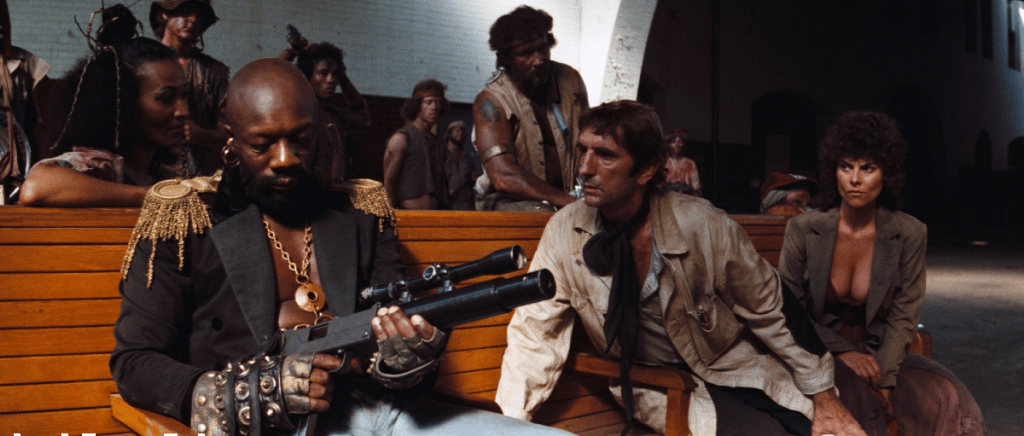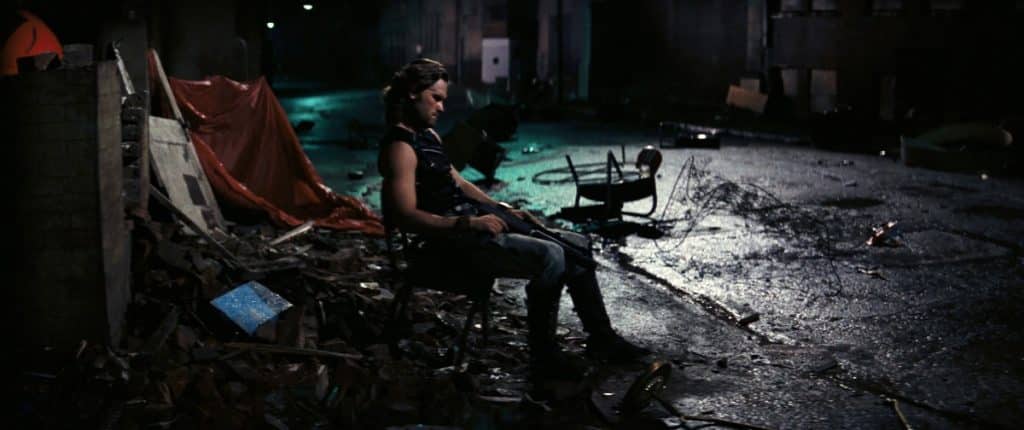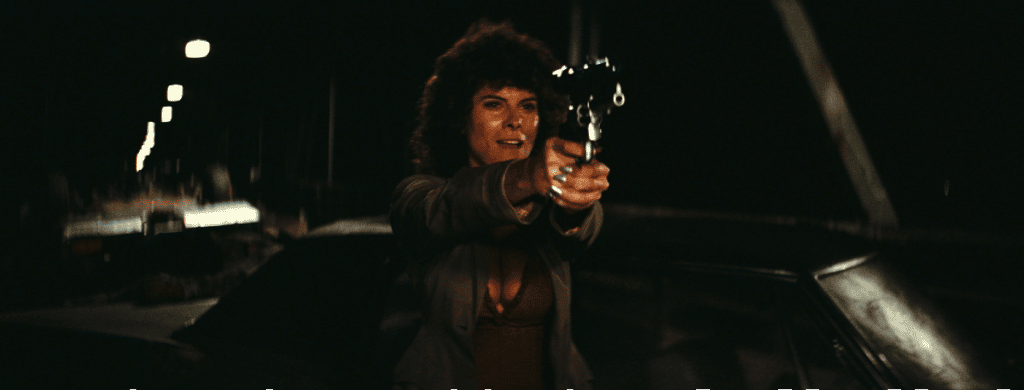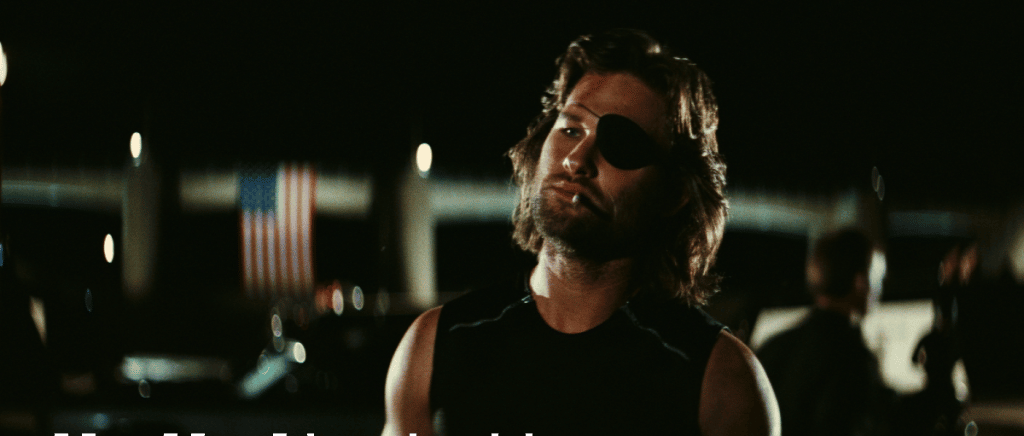Read also:
How to Watch FX Live Without CableHow To Watch AMC Without CableHow to Watch ABC Without CableHow to Watch Paramount Network Without CableJohn Carpenter’s Kurt Russell-starring dystopian actioner boasts one of western cinema’s a-number-one anti-heroes.
Man, Escape from New York. What a picture. It’s one of the standouts of director/co-writer John Carpenter‘s damn-near-unmatched 1976-1988 run of stupendous filmmaking, a man-on-a-mission film with a driving sense of urgency that still makes time to breathe in its mood and world. Dean Cundey’s widescreen cinematography captures the ruined prison island of New York in deep blacks and dense color and gorgeous widescreen framing. Carpenter and Alan Howarth’s score is cool and moody. The main theme alone is best described as “indelible.”
The ensemble is a murderer’s row of great actors with fantastic faces: Adrienne Barbeau, Isaac Hayes, Donald Pleasance, Lee Van Cleef, Ernest Borgnine, and the one-and-only Harry Dean Stanton. Each does unforgettable work.

Hayes brings a ruthless precision and drive to the Duke of New York. Pleasance gradually reveals the abducted President of the United States’ despicable narcissism as he moves from hostage to escapee. Barbeau’s Maggie is practical, pragmatic, and deeply in love with someone (Stanton’s Brain) who’s both quite like her and deeply unlike her. Indeed, where Maggie is straightforward, Stanton brings fast-talking hucksterism to Brain that remains oddly likable despite his constant hustling.
Borgnine’s relentless good cheer and general decency is a welcome counterbalance to a world as ruthless as Escape from New York’s. And Van Cleef turns his icy gaze into a calculating, ruthless, ever-so-slightly human embodiment of the authoritarian state.
And at the center of the ensemble, driving it all? Kurt Russell’s Snake Plissken—an all-time great performance of an all-time terrific anti-hero. Snake Plissken is the reason Escape from New York sings. With Escape celebrating its 40th birthday, now’s a fine opportunity to dig into the ways his character, Russell’s performance, and the film around them work together.
Snake Plissken is the reason Escape from New York sings.
Snake, a one-time war hero turned full-time thief, is–in his own words and Russell’s–an “asshole.” He’s deeply cynical, professionally amoral, and above all else looks out for himself. He’s also world-weary, lonely, and caught in a well and truly horrifying situation. He has 24 hours to rescue the President (and a recording he’s carrying) from New York, or he dies. 24 hours is both no time at all and all the time in the world and New York, even ruined and converted into a maximum-security prison, is a massive place.
Escape from New York, in other words, builds itself on the nerve-shredding stop-start of “hurry up and wait.” Snake runs down every lead he has and uses all the tools at his disposal, but even they can only do so much. There are moments in Escape from New York where all that Snake can do is be still. Russell, Carpenter, and their collaborators use these forced moments of quiet to deepen Snake. They emphasize his bone-deep exhaustion and his unbreakable will to survive. When Escape’s action rolls around, they translate the dissonance between the two into thrills.

Consider the following scene, which takes Snake from a moment of relative peace to a swift flight from danger:
Watch the way Russell moves. While talking with the doomed New Yorker (Season Hubley), Snake’s cautious, and physically on-guard even when things seem calm. When everything goes sideways and he must flee from the city’s murderous undergrounders, Snake’s priority becomes escaping. He does not stop to brawl with his pursuers, because he has neither the ammunition nor the time. He uses his gun more to weaken drywall than he does to kill his pursuers since the former is a considerably more solvable problem than the latter.
Above all else, Snake keeps moving. He’s afraid, and he wants to get away from the horde that’s chasing him, but Russell makes it a calm, controlled fear. There is a way out. Snake can make it. He must make it. He will make it. He will not die in New York, not if he can help it. So, he moves, relying on his special forces training, his ability to improvise, and whatever good luck he can get to get clear.
Snake pushes forward relentlessly, driven by his need to survive and witnessing little to challenge his deeply held cynicism about the world. Snake Plissken is not a hopeful man or a good man, nor do the events of Escape from New York give him much reason to reevaluate that stance. But, for all his hard-earned apathy and callousness, for all that his overriding goal is just to survive, Snake does have a code of honor. He empathizes with Maggie—someone very much like himself, but for her forging love with Brain—and knows that lives have weight.

Escape from New York’s final sequence sees Snake at his most vulnerable, most ruthless, and most anti-heroic. When the President stops Snake’s ascent up the wall surrounding New York so that he can lure out and kill the Duke of New York, Snake is genuinely helpless—especially because he’s got minutes left before the microbombs in his neck detonate, and every second passed is one he can’t get back.
When Van Cleef’s Hauk allows his tech to disarm the bombs, Snake is openly, visibly scared, so much so that he initially doesn’t believe he’s safe. It’s a marvelous piece of physical acting on Russell’s part, particularly given the contrast between this rare moment of raw vulnerability and the cool control he displays elsewhere. Snake’s overriding goal is to survive, so it clicks that his defenses would drop when the question of his survival has come down to the wire.
Once things have calmed down, and Snake has a chance to talk with the President, Russell, Carpenter, and company showcase both Snake’s ruthless cunning and his deep, if private, code of honor. He tests the President to see if he can recognize the weight of the lives that bought his survival. When the President proves to be a callow schmuck who cannot see beyond himself, Snake ensures his embarrassment and disgrace.

As Escape from New York closes, Snake destroys the tape the President had hoped to use to secure his victory in World War III and walks on. The war will continue, but Snake has seen the deaths of his allies—however momentary or fraught—answered for. He has held to his code, and he is alive. There is a victory in that, however dark. It’s a heck of a punctuation mark for a heck of a movie, a sign-off worthy of the excellent work done by Carpenter, Russell, and their collaborators. 40 years on, Snake Plissken and Escape from New York remain tremendous.